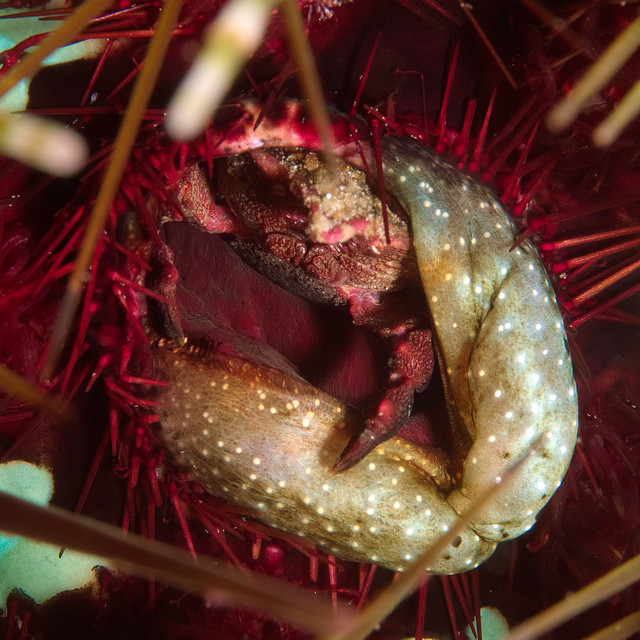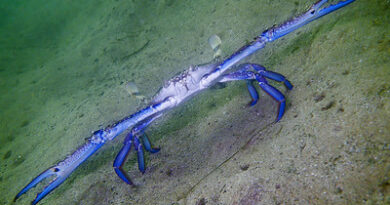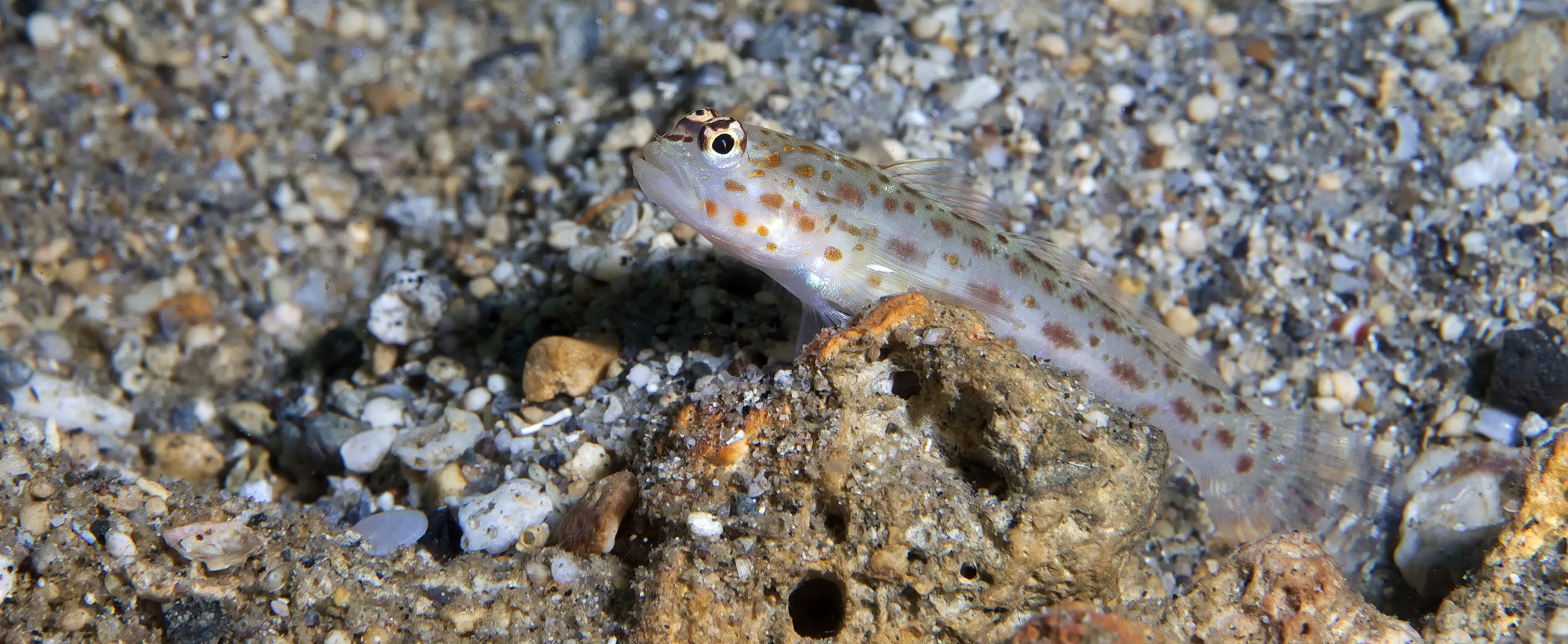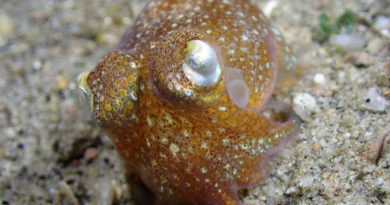The Return of the Anal Crab
What you are looking at in the video below is the center of the top of a sea urchin (Echinothrix), with its spines on the sides of the image. In the center you can see the urchin’s anal sack, with a crab, Echinoecus pentagonus, living inside it. This is a great place to hide for a small crab, since the tough, pointed spines of the urchin protect the crab from the many predators who would like to eat it.
“Adult females are confined to the rectum, where calcification of the periproct produces a gall-like structure. Males occasionally move in and out of rectums.” notes Peter Castro in a study from 1971.
Crabs feed both on host tissue as well as on material from the urchin’s fecal pellets, which they sort with their chelipeds. It seems that larval crabs find their host urchins by swimming towards the substrate, and finding a place which is dark and smells like sea urchin.
Interestingly, the closest relatives of this crab are deep sea crabs which live around hydrothermal vents (Lee et al., 2018). This is similar to the peralfishes, the Carapidae, where some members live in invertebrate body cavities, and others in the deep sea. Living in an ass or living in the very deep parts of the ocean seem to be equally valid alternatives when you are small and vulnerable.
References:
Castro, P. (1971). Nutritional aspects of the symbiosis between Echinoecus pentagonus and its host in Hawaii, Echinothrix calamaris. Aspects of the biology of symbiosis, 229-247.
Castro, P. (1978). Settlement and habitat selection in the larvae of Echinoecus pentagonus (A. Milne Edwards), a brachyuran crab symbiotic with sea urchins. Journal of Experimental Marine Biology and Ecology, 34(3), 259-270.
Lee, S. H., Oh, T. K., & Shin, M. H. (2018). The complete mitochondrial genome of Echinoecus nipponicus Miyake, 1939 (Crustacea: Decapoda: Pilumnidae), a symbiont of sea urchins. Mitochondrial DNA Part B, 3(1), 38-39.



